PRINT MAGAZINES NEWS PUBLISHING
PORTFOLIO EXAMPLES PORTFOLIO Lifestyle VANESSA
SAMUELS


‘CHOCOLATE’ ISSUE #2 BOOK DESIGN AND DIGITAL MARKETING – SAGE CREATIVE.CO Campaign ideation and design execution for mulit-tiered print, e-pub versions and digital socials.




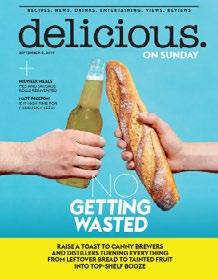





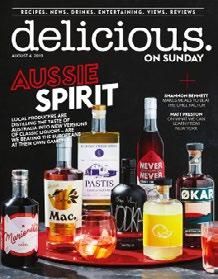

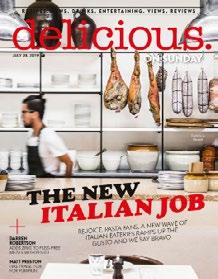





ART DIRECTOR – ‘ DELICIOUS. ON SUNDAY - STELLAR MAGAZINE; THE SUN HERALD’ Art Director for Delicious. on Sunday, a weekly print and digital title in Stellar magazine - The Sunday Telegraph. Duties included: Directing and designing for weekly cover talent shoots, food shoots, print and digital versions - Managing all business accumen, both internal and external creative teams, News Corp Marketing departmentsfood editors, photographers, stylists, talent shoots and all digital assets.
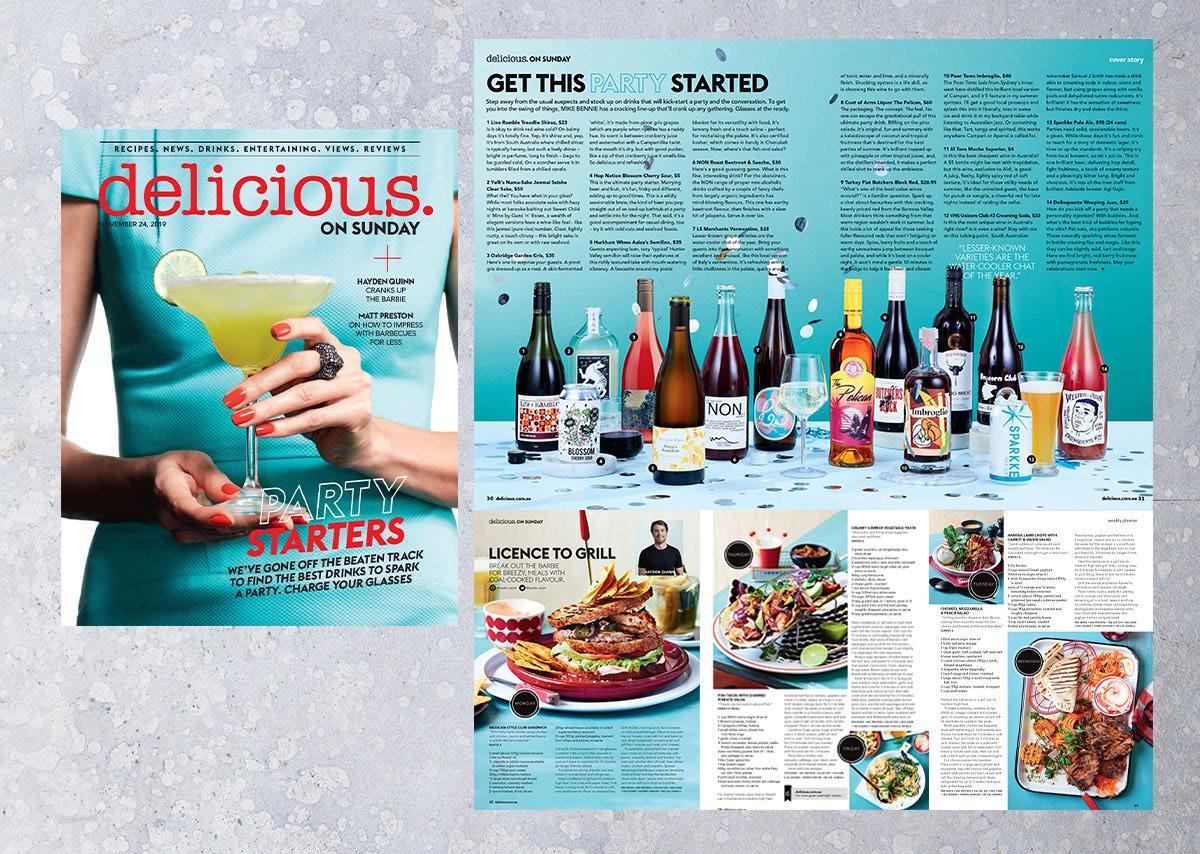

 ART DIRECTOR – ‘ DELICIOUS. ON SUNDAY - STELLAR MAGAZINE; THE SUN HERALD ’ – MAGAZINE AND DIGITAL MANAGEMENT EXAMPLES
ART DIRECTOR – ‘ DELICIOUS. ON SUNDAY - STELLAR MAGAZINE; THE SUN HERALD ’ – MAGAZINE AND DIGITAL MANAGEMENT EXAMPLES
 ‘DELICIOUS 100 - NATIONAL RESTAURANT REVIEW - THE SUNDAY TELEGRAPH & SUNDAY HERALD ’ Art Director and designer for Delicious 100. National annual Top 100 restaurant reviews.
‘DELICIOUS 100 - NATIONAL RESTAURANT REVIEW - THE SUNDAY TELEGRAPH & SUNDAY HERALD ’ Art Director and designer for Delicious 100. National annual Top 100 restaurant reviews.

SENIOR ART DIRECTOR/DESIGNER – ‘THE SYDNEY MORNING HERALD’
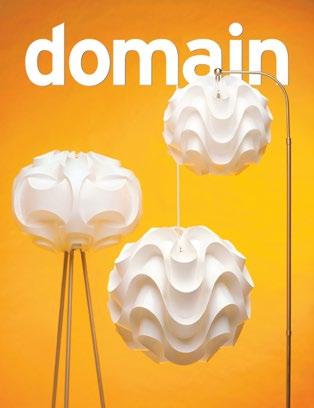






domain
domain






Senior designer and Art director for DOMAIN – The Sydney Morning Herald – Lifestyle architectural and design liftouts and special projects designer.



Duties included: Designer of the weekly lifestyle liftout for (Thursday’s) Domain, featuring architectural design and lifestyle content, including concept and talent shoots, location and studio shoots, styling and weekly production management.
Ironing out a design problem 9 Thepretenders Thepretenders Can you pick the original? Best of the shade trees 15 December 12 2002
North Coast Property Special 20 Rescue mission New life for old treasures
Plants that control climate 14 November 21 2002 6 domain apr8, 2004 domain.com.au ‘I as it was,”the Pope reportedly said after seeing Mel Gibson’s The Passion of the Christ If he did say that (and there’s some contention),it’s unclear whether he was referring to the film’s depiction of spiritual events – or to its rather surprising assertion that Jesus invented the dining table. In case you haven’t seen Gibson’s biblical blockbuster: in flashback,Jesus building dining table under the eye of Mary,his mum. When Mary criticises her son for building his table too high,he responds pithily: We’ll build high chairs. Still,Mary is unimpressed. The idea will never catch on,she says. She was wrong,of course,which must have happened infuriatingly often,given her son was the Messiah. But just how accurate is Gibson’s account of Jesus’contribution to furniture evolution? Did the son of God really invent the dining table? And what about those other domestic staples we take for granted? The bed? The chair? The ironing board? Did Jesus invent them,too? “There is no reference in the Bible to Jesus as carpenter,”says the Anglican Bishop of North Sydney,Dr Glenn Davies. “But his father was carpenter,and Jesus didn’t start preaching ’til he was 30,so it’s more than likely he took up his father’s trade. He had to earn quid somehow.” The Bishop believes Mel indulged in artistic licence. “It’s bit like Shakespeare’s use of humour in tragedy,”he says. “Such as,‘Alas,poor Yorick ...’So you get to see that Jesus is an ordinary man in an ordinary village in Nazareth with an ordinary mum. Although theological perspective would be to say that Jesus is the lord of everything,including dining rooms.” Tim Laurence,associate dean at the faculty of design,architecture and building at UTS,is similarly sceptical. doubt it [that Jesus invented the dining table],”Laurence says. “Otherwise guess the Vatican would have the copyright and would be very happily reaping the rewards.” So where did the dining table originate? The WorldBookEncyclopedia reveals that ancient Egyptians created the first fine furniture about 3000BC. And,in the Early Dynastic Period, furniture already revealed social status. Only the homes of nobility,officials and landowners had any chance of featuring in Better Homes And Oases Naturally,the king only had the very best, including beds and couches with legs shaped like lion’s,and chairs with removable cushions. These pieces needed to be durable: after the king’s death, furniture was packed into storage for use in the afterlife. Meanwhile,commoners often owned just one item: a three-legged stool. That’s right,a stool. Hollis S. Baker writes in Furniture In The Ancient World that the oldest known remnants of wooden furniture “show both an advanced knowledge of the principles of joinery and also considerable skill in the associated arts of carving and inlaying”. Baker fails to reveal whether Egyptians preferred to shop at IKEA or Freedom. He does,however,reveal that much Egyptian furniture had very short legs. That’s partly because those Egyptians were pocket-sized: their average height was little over five feet (1.5m). They also liked their beds to be only 30cm off the ground. Many facts about the furnishings and homewares of ancient civilisations have been learned from art. “Most historical records come from paintings or inscriptions at places such as the pyramids or ancient Greek temples,”Laurence says. “There was very sophisticated furniture in both Egypt and Greece. On Delphic vases you might see male figure sitting in a chair,sometimes with flute. Objects like that are very good source for looking at the origins of furniture.” The Ancient Greeks (1100BC-AD400) stole many of their ideas from the Egyptians. Again,only the wealthy had much furniture; common folk had crude table and,yes,a three-legged stool. But Ancient Greece was the Golden Age for dining tables. For meals,a person would lie on the family’s cover story Sacha Molitorisz CHAIRS Inspired by WWII aeronautical engineering, Charles and Ray Eames developed their eponymous plywood chair. TABLES The Ancient Greeks slept on theirs. Right, Tahoe Nest by Country Road Homewears. STOOLS Joe Average in Ancient Egypt took his three-legged seat to the afterlife. Left, Philippe Starck’s La Boheme.
seat
Furniture design has come a long way since the three-legged stool. AD1956 1100BC 3000BC apr8, 2004 domain 7 today as lava lamps,those inexplicably enduring icons of psychedelia,were invented. The “genius” responsible was Edward Craven Walker,a British oddball,who,according to Wayne Hemingway’s book, Mass Market Classics: The Home,was also the founder of several nudist colonies. With the lava lamp,he created kitsch bestseller; in the US,400,000 are sold annually,with the fibre-optic lamp somewhat less successful spin-off. The beanbag is another ’60s classic. It wasn’t new concept: backless,armless seats and footstools had been around since Ancient Egyptian times and became known as ottomans in the 1800s. These are closely related to the “pouf”,which the Macquarie Dictionary defines as “a large firm cushion,often cylindrical,strong and high enough to serve as seat or leg rest”. Like the dining table, the pouf predates Jesus. Unlike the dining table,it was perfectly suited to double entrende. In 1968,Gatti,Paolini and Teodoro reinvented the pouf/ottoman for new,more herbal generation. They called it the “Sacco”,and it became popular as the beanbag. “It’s such simple design,and it was plagiarised blatantly,” Laurence says. By the ’70s,they were available in vinyl,leather,plastic,cloth and corduroy,and in smaller sizes for kids. “The beanbag is significant because it was the epitome of relaxed,non-defined form,where the body could create the shape of an armchair through a person’s reclining position,”Laurence says. “And was using what was then very new technology: beaded polystyrene foam. Those funny little balls. But the fact it was portable. The marketing of the time showed young men and women carrying them over their shoulders.” Laurence argues that many of the chief innovations of the 20th century are not new items of furniture,but furniture made from new materials. “Most of the forms were invented centuries ago,”he says. “It’s the manufacturing technology that’s new,and particularly the use of steel. Most furniture up to the 20th century was made of stone or wood,but now there’s tubular steel framing that grew out of experiments with bicycle design by Marcel Breuer.” Breuer was the Bauhaus wunderkind who devised a chair he called the B3 in 1925. Later known as the Wassily,it’s “one of the first and finest examples of modern tubular steel furniture”,writes Michael Tambini in TheLookofTheCentury Laurence also highlights the groundbreaking use of plywood by Charles and Ray Eames,which stemmed from aeronautical design in World War II. “This led to new aesthetic of thin,fine furniture that no longer needed massive pieces of timber,”he says. Dating from 1956,one of the Eames’s most famous creations was lounge chair – consisting of three plywood shells padded with leather upholstery and connected by aluminium supports – and ottoman. Known as the Eames Chair,it was made as a birthday gift for Hollywood film director Billy Wilder. So,what’s the next point on the furniture timeline? Rina Bernabei,at UNSW’s Faculty of the Built Environment,thinks the Campana Brothers,from Brazil,are “the hottest of the moment”. “They’ll come back to the office and throw red rope onto desk,and then design chair that looks like the rope,”says Bernabei. “I love the fluidness and randomness.” Laurence says advances are being made with new materials such as Kevlar. “There is an Italian chair called the Superlight,”he says. “You can lift with one finger,but it’s extraordinarily strong.” Sounds good,but is there downside? “Well, the downside is they can blow away.” table on his/her side,eating while leaning on an elbow. At night,the table would serve as bed. So the dining table and,indeed even chairs, existed long before Christ. And just as the Greeks stole ideas from the Egyptians,the Romans (700BC-AD400s) stole from the Greeks. They took the klismos,a common Greek chair with curved legs and back,made heavier and larger and covered it with upholstery. Another Roman innovation was the slab table,not table for beer but table built from slab of marble or wood resting on upright slabs of marble. Then,in the Middle Ages,from the 400s until 1300,the world’s collective furniture know-how seemed to fall between the cushions of the still-tobe-invented couch. Sure,the rich had their artisans coating their chattels in gold,but even this couldn’t hide flawed workmanship. Eventually like man awakening after very long slumber on dining table – furniture design came to life again. And new household items started appearing. The venetian blind,for instance,made its way from Persia into exclusive French and Italian homes. That’s right: Persia,not Venice. There is, however,a Venetian connection: Venetians traders are thought to have imported the shutters from Persia to Italy,and thence to the world. But it was an American who claimed them as his own. In 1841,John Hampson of New Orleans was awarded a patent for his method of adjusting the angle of the slats. In 1860 in the UK,Frederick Walton invented linoleum to cover floors. In 1893,the first electric toaster was invented in the UK. wasn’t until 1919,however,that Charles Strite invented the pop-up toaster with timer,removing the need for turning over one’s toast. timely breakthrough, given Otto Frederick Rohwedder had developed the bread slicer in 1912. Here was progress. The Egyptians,Greeks and Romans might have had stools,chairs and beds, but did they have pop-up toasters? No. And did they have lava lamps? It wasn’t until the 1960s that what we know LAVA LAMP A kitsch classic invented by British nudist, Edward Craven Walker; 400,000 are still sold every year in the US. 1800s 1960s A theological perspective would be to say that Jesus is the lord of everything, including dining rooms. – Dr Glenn Davies, Anglican Bishop of North Sydney. OTTOMAN Also known as the pouf, was reinvented as the beanbag in 1968. Left, Jed from Freedom. Right, Ottoman by D Dept. TOASTER The pop-up version with timer appeared seven years after the breakthrough invention, the bread slicer. Left, Moulinex toaster. 1919 BEDS Old concept, new materials. Right, daybed by Peter Adams from Interstudio. 2004
The
of history


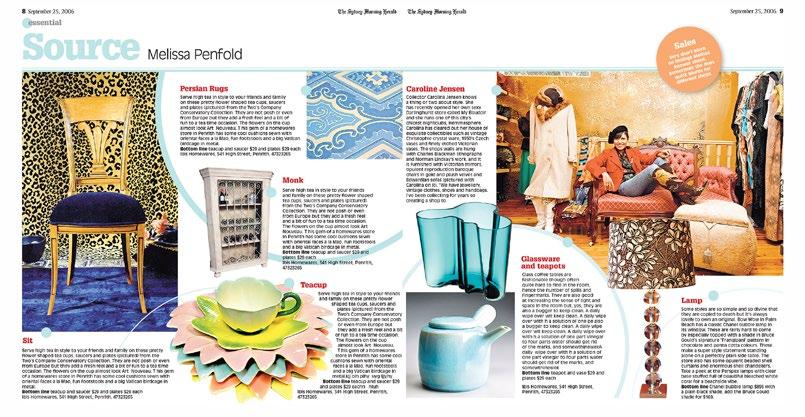
SENIOR ART DIRECTOR/DESIGNER – ‘THE SYDNEY MORNING HERALD’
Senior designer and Art director for DOMAIN and ESSENTIAL (mock examples) – The Sydney Morning Herald – Lifestyle architectural and design liftouts and special projects designer.
Duties included: Designer of the weekly lifestyle liftout for (Thursday’s) Domain - Featuring architectural design and lifestyle content, including concept and talent shoots, location and studio shoots, styling and weekly production management.


SENIOR ART DIRECTOR/DESIGNER – ‘THE SYDNEY MORNING HERALD’ – COVER SHOOT EXAMPLES
Senior designer and Art director for DOMAIN – The Sydney Morning Herald – Lifestyle architectural and design liftouts and special projects designer.
Duties included: Designer of the weekly lifestyle liftout for (Thursday’s) Domain, featuring architectural design and lifestyle content, including concept and talent shoots, location and studio shoots, styling and weekly production management.

ART DIRECTOR – ‘MASTERCHEF MAGAZINE’ – NEWSLIFEMEDIA (NLM)
Duties included: Art Direction and designing for talent shoots, food shoots and storyboarding for video production of I-pad videos and animations.
Directing editorial teams and managing studio budgets and all business accumen, including marketing material and design for the publication across print and digital publications.

ART DIRECTOR – ‘MASTERCHEF MAGAZINE’ – TALENT SHOOTS – NEWSLIFEMEDIA (NLM)
Duties included: Art Direction and designing for talent shoots, food shoots and storyboarding for video production of I-pad videos and animations.
Directing editorial teams and managing studio budgets and all business accumen, including marketing material and design for the publication across print and digital publications.


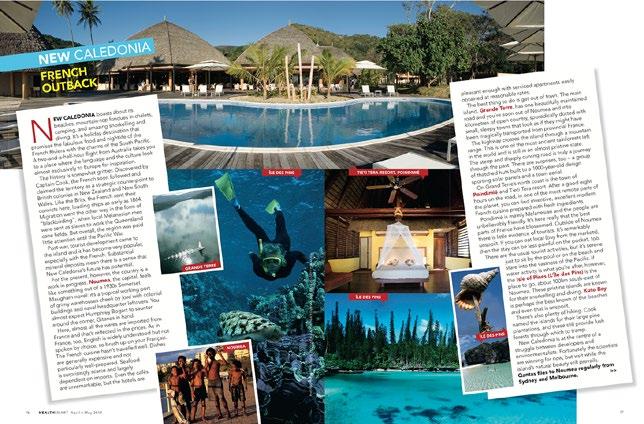
 VARIOUS LIFESTYLE PUBLICATIONS: TRAVEL – ARCHITECTURE – FASHION – DESIGN PROJECTS Art direction and design.
VARIOUS LIFESTYLE PUBLICATIONS: TRAVEL – ARCHITECTURE – FASHION – DESIGN PROJECTS Art direction and design.
https://www.youtube.com/watch?v=r-qwQNWsX_8



https://www.youtube.com/watch?v=UFJ8z2QEnY4


restaurants Andrew McConnell’s latest Asian-inspired venue appears to have escaped the curse of the ‘best new restaurant’ award, says Matt Preston. WHY I ❤... GOLDEN FIELDS RA restaurant 29 Matt Preston reveals how this charming Italian bistr makes everyone feel like par of la famiglia ❤ MC0812p029-031_WhyIlove.indd 21/06/12

Campaign launch for ‘TEFAL - Cuisine Companion’ Art direction and design for an advertising launch campaign for ‘Tefal Cuisine Companion’ - NewsLifeMedia Delicious, Inside Out and Taste.com.au magazines. ADVERTISING


























 ART DIRECTOR – ‘ DELICIOUS. ON SUNDAY - STELLAR MAGAZINE; THE SUN HERALD ’ – MAGAZINE AND DIGITAL MANAGEMENT EXAMPLES
ART DIRECTOR – ‘ DELICIOUS. ON SUNDAY - STELLAR MAGAZINE; THE SUN HERALD ’ – MAGAZINE AND DIGITAL MANAGEMENT EXAMPLES
 ‘DELICIOUS 100 - NATIONAL RESTAURANT REVIEW - THE SUNDAY TELEGRAPH & SUNDAY HERALD ’ Art Director and designer for Delicious 100. National annual Top 100 restaurant reviews.
‘DELICIOUS 100 - NATIONAL RESTAURANT REVIEW - THE SUNDAY TELEGRAPH & SUNDAY HERALD ’ Art Director and designer for Delicious 100. National annual Top 100 restaurant reviews.
























 VARIOUS LIFESTYLE PUBLICATIONS: TRAVEL – ARCHITECTURE – FASHION – DESIGN PROJECTS Art direction and design.
VARIOUS LIFESTYLE PUBLICATIONS: TRAVEL – ARCHITECTURE – FASHION – DESIGN PROJECTS Art direction and design.










